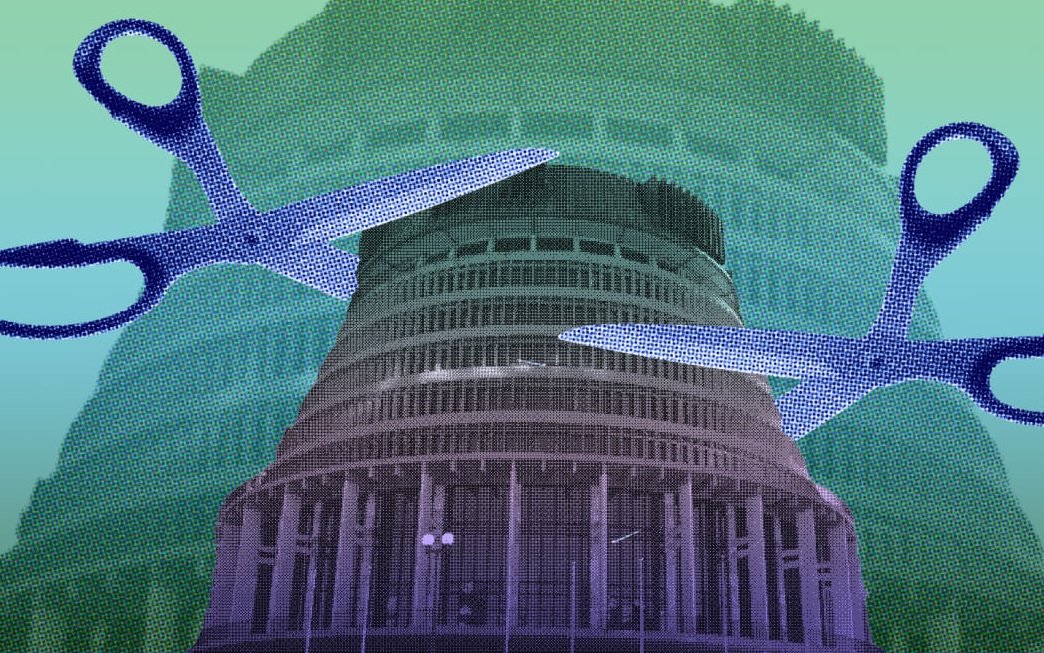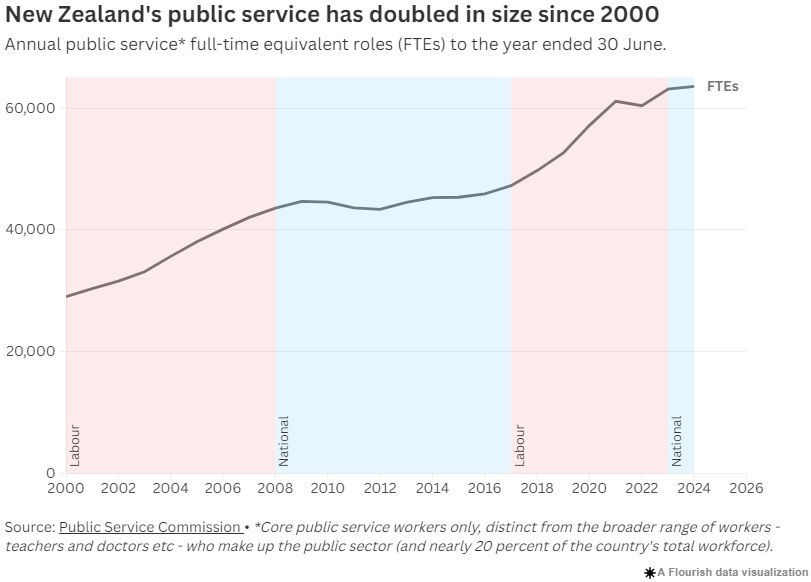
Thousands of jobs have been cut, but the public service continues to grow and increase wages.
More than 2000 public service jobs were cut in the six months from December to June. Meanwhile, nearly 7000 jobs have been cut across the public sector, according to RNZ's tracker. However, many of those were vacant.
The average redundancy payment was $56,400, with the total redundancy cost at nearly $50 million.
Overall, the public service experienced a small increase (0.7 percent) in full-time staff numbers in the year to June, 2024.
Coupled with a rise in average salary, the total base salary cost for the public service in 2024 increased by 5.3 percent, to $6.5 billion, according to the Public Service Commission.
Workforce data
When we think of public servants, we tend to think of people working for ministries in Wellington, paid from the public purse. In fact, just over half (56 percent) of public servants work outside the capital.
The broader public sector, representing about 20 percent of the country's workforce, comprises state sector organisations and local government. Think: education, health, environment, housing, justice, national security, social, and transport sectors.
Since the 1990s - after a series of reforms in the 1980s dramatically reshaped the state sector workforce - the public service workforce has oscillated around 1 percent of the population.
The most recent workforce data showed there were 63,537 full-time equivalent public service staff at the end of June. While that was a 0.7 percent increase from 2023, it was down from 65,699 in December.
National has criticised the public service's "bloated bureaucracy" under Labour.
In the five years to 2023, the public service workforce increased by 27 percent. Meanwhile, the overall public sector workforce increased by 15 percent, and the private sector by 9 percent, according to Statistics New Zealand.
It is worth mentioning the Covid pandemic saw a spike in public service roles as part of the response.
However, public service FTEs in 2024 still account for just 1.2 percent of the population.

Background
Early this year, Finance Minister Nicola Willis asked public service departments to identify savings options of either 6.5 or 7.5 percent.
At Budget 2024, the government said it met its baseline savings target of $1.5b average operating savings per year. But Willis would not rule out further job losses.
Departmental operating spending in the year to 30 June was $619m, a 32 percent decrease from the previous year.
Beyond core public service departments, other public sector agencies have also made cuts. For example, Crown entities such as WorkSafe and Callaghan Innovation, along with Crown research institute NIWA.
RNZ is keeping track of the impact of the job losses and is counting roles going across the wider public sector. To date, since Willis' directive, there have been nearly 7000 job losses.
Not all cuts were the result of government savings requirements: some were projects no longer going ahead under the coalition government, and others were vacancies no longer being filled.
Increasing salaries
Despite all the talk of cost-cutting, public servants' base salaries were rising.
In 2024, the average annual salary was $101,700, an increase of 4.6 percent from the previous year. Some of the lowest earners received the biggest pay bump, according to the Public Service Commission.
In comparison, private sector average earnings increased by 4 percent over the same period, to an average annual salary of about $82,000, according to Stats NZ.
(Prior to a 7 percent salary change in 2023, public service wages had been falling behind private sector pay since 2017.)
Census data from 2018 showed public servants were more qualified than those in the private sector, state-owned enterprises and local government. The health and education sectors were an exception - in these areas, public servants were less qualified than other workers.
Departments with a higher proportion of staff in operational and service delivery jobs tended to have a lower average salary. In 2023, the average salary at Corrections was $81,200, the lowest of public service departments.
At the top of the list were organisations with more leadership, specialist professional, and policy staff. The relatively small Social Investment Agency (formerly the Social Wellbeing Agency) and Public Service Commission had the highest paid workers in 2023, with average salaries of $146,300 and $148,300 respectively.
In August, it was revealed the new Ministry of Regulation was paying an average salary of more than $150,000.
The anti-red tape department will eventually employ more than 90 people, and is overseen by ACT leader David Seymour.














